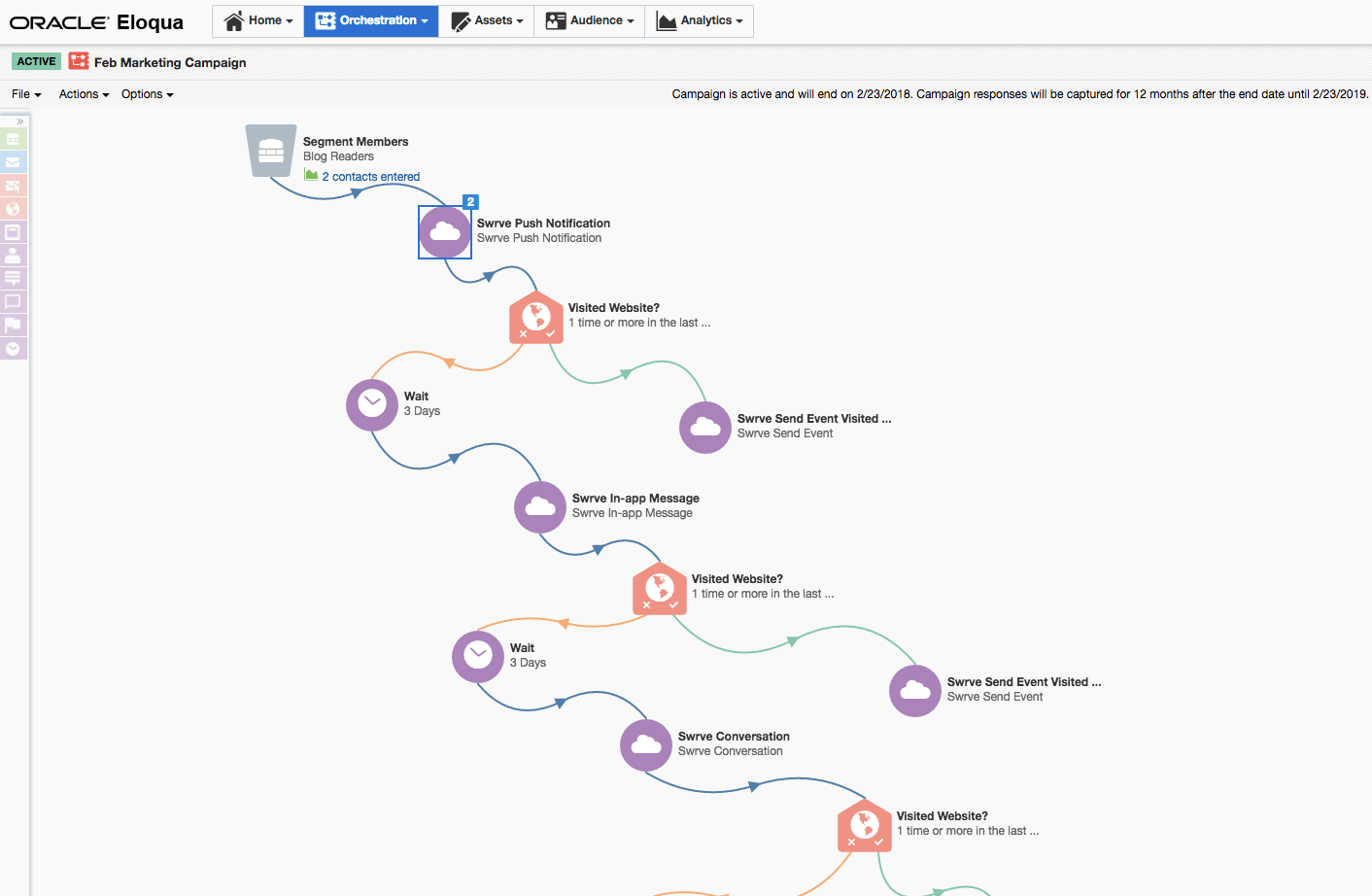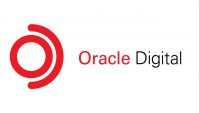Swrve’s new integration gives Oracle visibility into apps
Marketers using Oracle Eloqua can now send in-app messages, track user activity in-app, and trigger cross-channel campaigns based on app activity.
The big marketing clouds are still catching up in mobile marketing. This week, Oracle took a step toward more complete mobile coverage with the full integration of Swrve’s app-oriented mobile marketing application.
Oracle’s Marketing Cloud out-of-the-box is “blind to what users do in the app,” Swrve Senior Director of Product Marketing Alan Tam told me. Swrve focuses on app marketing — user retention, engagement, monetization and targeting.
Through Eloqua, the Oracle Marketing Cloud environment for campaigns directed at salespeople, it had the ability to trigger push notifications to mobile users. Swrve was available as a simple integration for batch exports of data.
Now, Swrve’s full integration allows Eloqua to track mobile app usage, so cross-channel events and campaigns can be based on what the mobile user does in a brand’s app, because the app activity is visible in the customer journey.
It can also trigger personalized, rich media in-app messages — in addition to push notifications — from within customer journeys in Eloqua. There’s also real-time mobile analytics, segmentation, location-based targeting and A/B testing.
Previously, Tam said, a user might have looked at a pair of shoes on a retailer’s desktop or mobile website. A marketer on Eloqua could have seen that, following up with a push notification to the user’s mobile device that provided a 20-percent-off discount coupon for those shoes and linked directly to the retailer’s app on the device.
But after the user clicked and went into the app, Oracle lost visibility.
Now, through Swrve, Eloqua can tell in real time how long the user spent in the app looking at the screen with the pair of shoes, so the user’s interest can help guide any followup messaging. This assumes that the retailer’s app has utilized Swrve’s software development kit (SDK).
Additionally, Tam said, Swrve’s predictive capabilities can forecast the best time to send a new notification or other messaging. While Oracle’s platform also has predictive analytics, it couldn’t see into activity in the app.
Another use case: Swrve-enabled European airline Ryan Air has an app that knows when the user is checked in and, via geolocation, when she has arrived. A marketer could use Eloqua to send a push notification that launches a customer satisfaction survey in the app, timed properly because Eloqua can receive info about app activity. The survey results could be imported from the app into Oracle.
Tam noted that a mobile app campaign is built in Swrve, but it can be configured in Oracle once it’s set up. Swrve has a similar integration with Oracle marketing cloud competitor Salesforce, he said, and is in discussion about integration with Oracle’s Responsys, its B2C campaign tool.
Marketing Land – Internet Marketing News, Strategies & Tips
(44)









